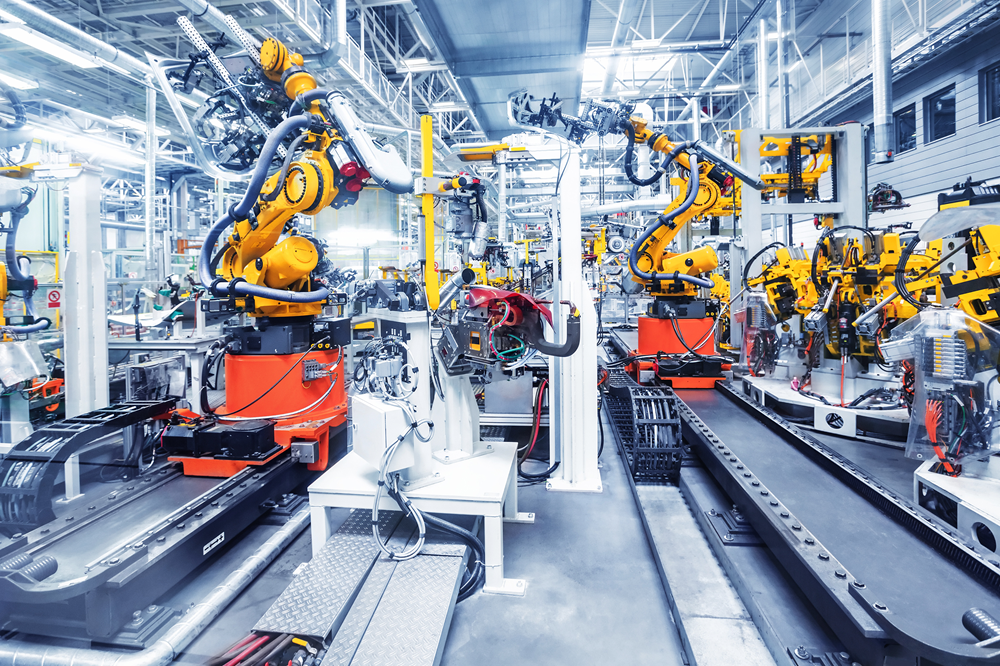Manufacturing and metalworking operations have shifted dramatically over the last few years — both from changes brought on by COVID-19 as well as the growing adoption of robotics. A May report by the International Federation of Robotics found robot installation rose by 12% in 2022, with an estimated 41,624 units installed in manufacturing operations across North America. More than a trend, the proliferation of robots throughout the industrial sector shows they’re becoming a permanent fixture.
Increasing the use of robots in any operation is associated with greater efficiency and lower operating costs, but benefits aren’t limited to the bottom line. In fact, implementing any type of robotic technology can significantly improve worker safety. Read on to learn how.
The Role of Robots in Metalworking
There is a wide variety of robotic metalworking solutions, ranging from fully automated, end-to-end systems to collaborative ‘cobots’ that augment manual effort. These robots can take over or assist in virtually every aspect of an operation.
For example, material handling solutions effortlessly move heavy parts and components to alleviate workers or automate deburring by meticulously smoothing edges and surfaces of finished parts. Robotic systems can also execute welding and cutting operations with greater accuracy and consistency than workers, optimizing material usage.
Worker Safety and Robotics for Metalworking
Regardless of what type of robotic solutions you implement in your operation and how you scale them, manufacturing robots can improve productivity, cut costs, and dramatically improve worker safety. Here’s how:
Less Exposure to Cutting and Welding Dangers
Robotic solutions for metalworkers can handle various tasks in manufacturing environments, from material handling to part finishing. Anywhere you implement a robotic solution reduces human risk in hazardous environments. For example, material handling robots keep workers at a safe distance away from hot workpieces after an operation, as well as sharp edges. In cutting and welding operations with robots, workers don’t have to make direct contact with tools or workpieces, lessening the chances of an industrial accident.
Reduced Risk for Musculoskeletal Injuries
Material handling robots also take over the heavy lifting that creates so much risk in metalworking operations, reducing the chance of musculoskeletal injuries to workers. They can move and position heavy metal parts with greater precision than people, eliminating the need for manual lifting and the wear and tear it can take on bodies over time.
Less Exposure to Noise Pollution
Metalworking operations can be incredibly noisy, leading to hearing damage and loss over time. Many robotic solutions can work in isolation so that human operators can limit their exposure to potentially harmful noise. In some cases, robots can operate more quietly than traditional machinery, reducing the overall noise pollution in the workplace. In addition to reducing the risk of hearing impairment, this contributes to a more comfortable shop environment.
Reduced Need for Rework
Metalworking robots are capable of incredible precision and accuracy, improving part consistency and minimizing the need for time-consuming rework. Not only does this save time and money, but it also reduces the need for additional detail cutting to improve part quality, a process that can expose workers to additional dangers. Fewer errors in the production process also mean fewer opportunities for accidents or injuries to occur while correcting mistakes.
Metalworking Robots for a New Era of Worker Safety
As robotics become increasingly prevalent in metalworking, they’re also playing an increasingly pivotal role in protecting worker safety on the shop floor. Delegating repetitive and potentially dangerous tasks to robots allows operations to not only enhance productivity and product quality, but also prioritize the health and safety of their valuable employees. Improving worker safety with robotics could be key to gaining a competitive edge in the hiring market.

